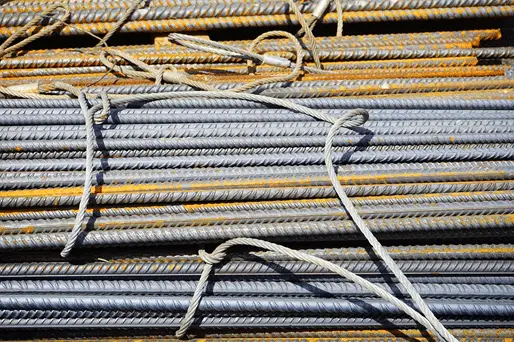Steel reinforcing refers to adding steel elements to concrete to make constructions stronger. Since the 19th century when this appeared as a novel idea – reinforced concrete has become a staple of all modern architecture and construction. Reliable, available, and relatively easy to work with, there are many reasons why this is the preferred material for any larger project, but also the go-to for smaller home repairs too.

As steel is still the only 100% stable building material that is widely available today it is only logical that it is being used in a huge variety of ways. Sometimes as support on its own, as is the case of I beams, but mostly in the form of reinforcing bars or mesh for concrete pillars and slabs. It gives concrete great tensile strength when used correctly, making it an unmatched material to any other, especially cost-wise. But to use it correctly one must know at least the basics of working with steel reinforcement.
The Steel Market
Being a strategically important resource, steel production and distribution receives a lot of government and public attention. The steel market in Australia is no different and official reports periodically cover this topic. When set out to buy any steel products you are, undoubtedly, the end part of a very large chain that guarantees you both quality and price.
Those in the construction business will most often buy from whoever is nearest to them to keep shipping costs to a minimum. While this is sound logic for smaller projects, those who will have their hands full with several larger projects at a time may consider getting their steel reinforcement from well-known regional players. As can be seen on reozone.com.au some of the larger wholesalers in Australia will not only have better deals as they are in direct contact with steel producers, but will also have professionals in their ranks who can better determine what the client needs. This type of help is very needed in the complex world of construction and metallurgy, as new standards are being adopted and new techniques are developed.
Several factors need to be determined for architects to know whether steel reinforcement is needed, and how much of it will be enough. Considering the relatively high cost compared to gravel and cement it is well worth asking experts to know not to buy too much.
Common Types of Steel Reinforcement
The main form of steel reinforcement is rebar, which is a reinforcing bar that can be made out of different types of steel and connected into various shapes prior to being covered with concrete.
Hot Rolled Deformed Bars
The most common type of reinforcement for reinforced concrete construction. The bars, as defined in the AS/NZS4671-2001 standard, come in nominal diameters ranging from 12 to 36 mm. The bar is made by hot rolling in production mills where the distinctive grooves, or deformations, are made that serve the purpose of giving a larger surface to bind with the concrete.
Cold Worked Steel Reinforcement
When hot-rolled bars undergo a process of cold reworking – we get this type of reinforcement. The bars are either twisted or drawn out at an ambient temperature which gives them different properties, specifically their plastic deformation is greatly reduced and so they are mostly used in projects where minimal tolerances and straightness are needed.
Prestressed Steel
This is a type commonly used when building bridges or making prestressed concrete slabs in buildings. The most common form of prestressed steel is a bundle cord of steel wires, usually 7 of them, that can be laid in a multitude of profiles and shapes.
Plain Steel Bars
Most people opt for this type of steel reinforcement when working on a tight budget. Smooth-surfaced and made out of mild steel (a type of low carbon content steel) they are a bit more difficult to work with but are the cheapest on the market. As the smooth surface is less likely to bind tightly with concrete they need to, at least, be bent and bound with other bars in the formwork stage of construction.
Reinforced cement concrete constructions are the only viable option for any construction company to make stable and up-to-code buildings today, but the same goes for many amateurs too who are working on their small projects.
And while the construction companies may already have experienced masons who will know exactly how thick rebar is supposed to be just by looking at the blueprints, not to mention civil engineers who are schooled in the field, the inexperienced masons and hobby builders will benefit from first asking around what type and how much steel reinforcing is needed.
